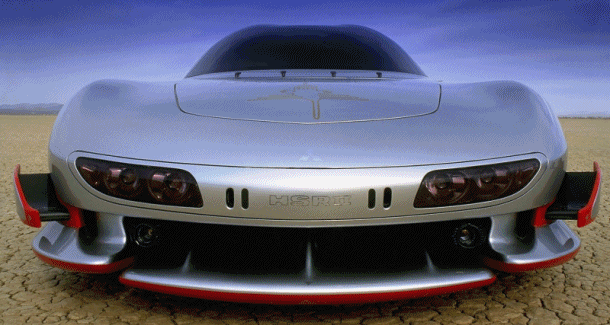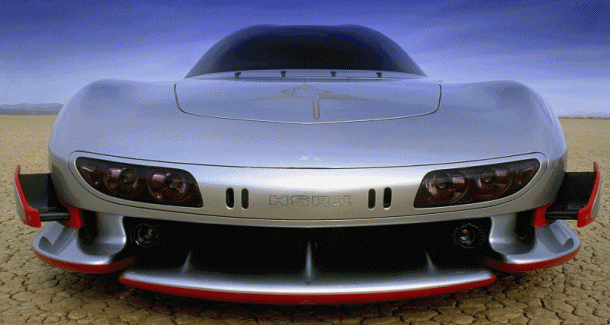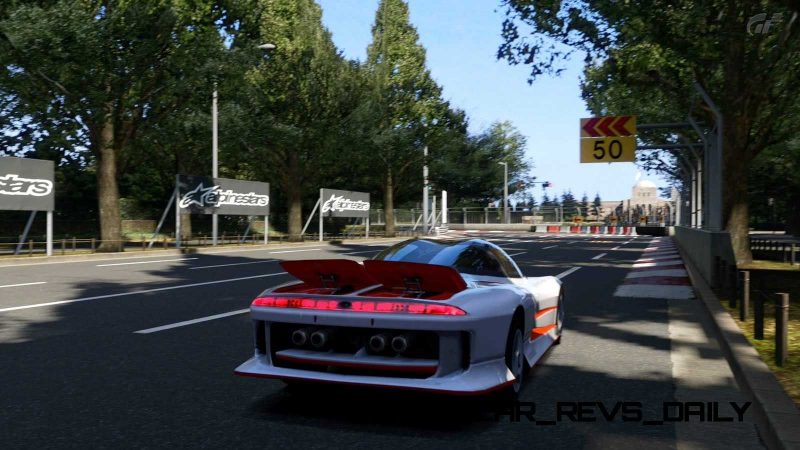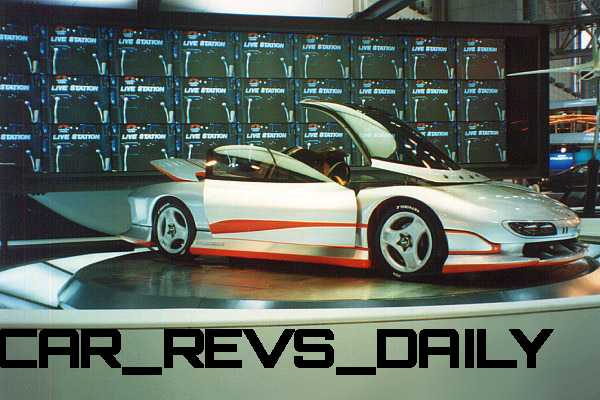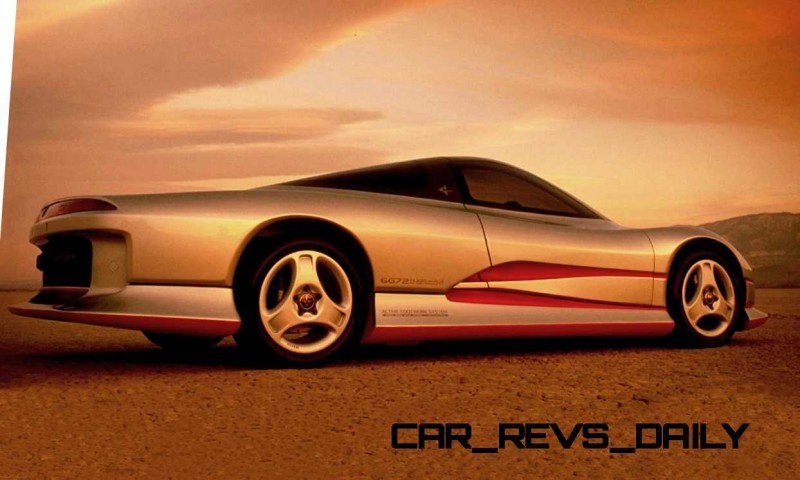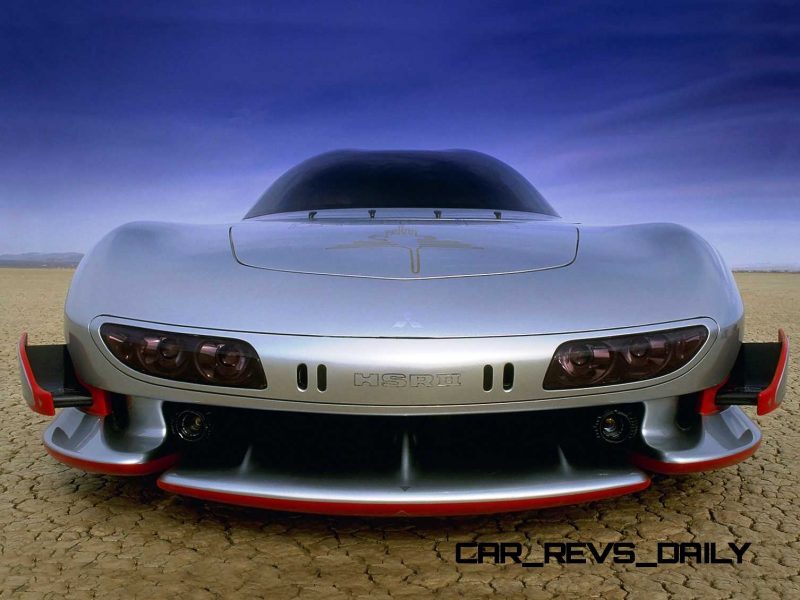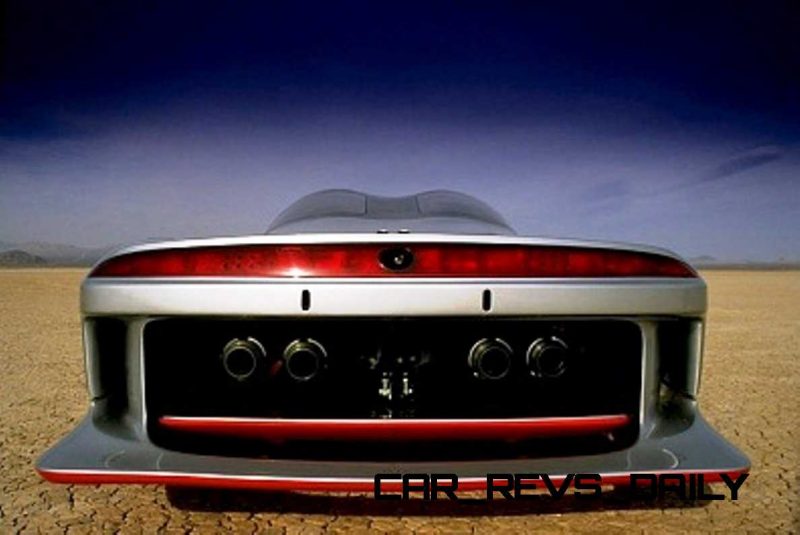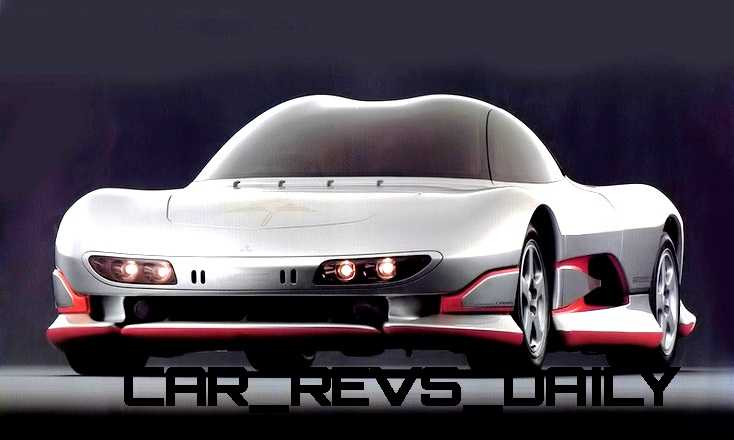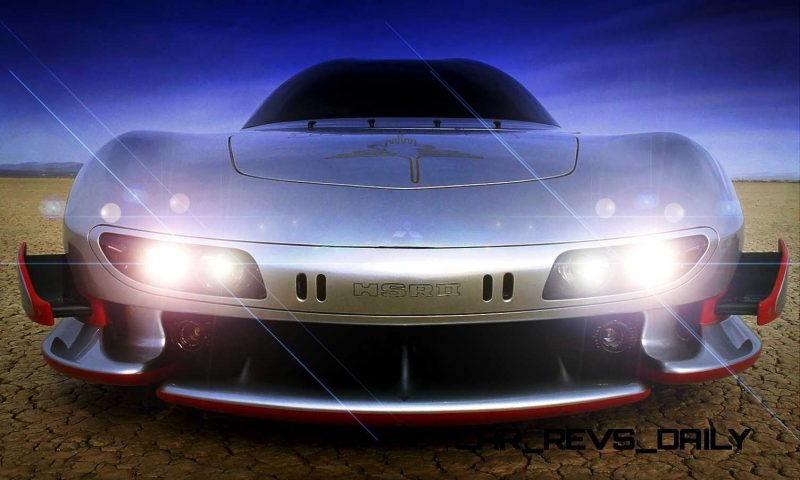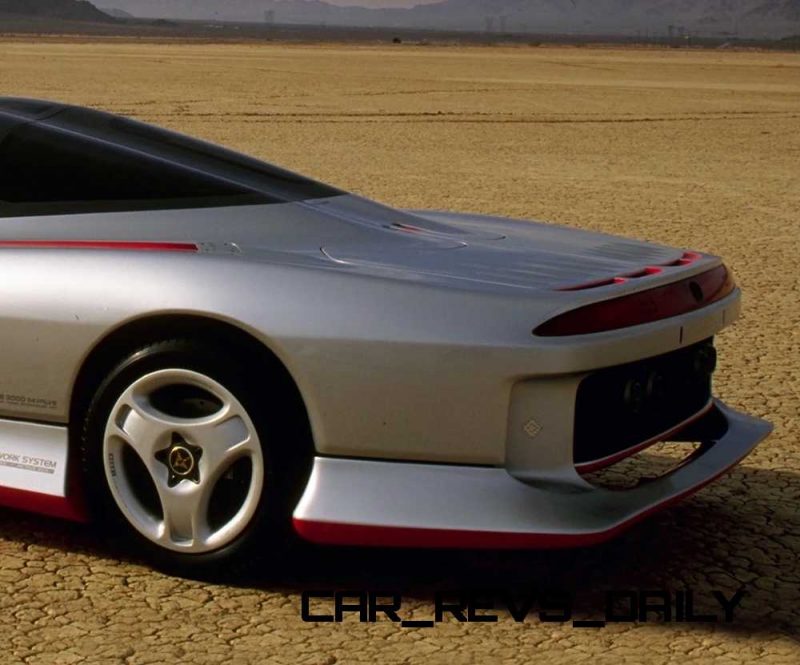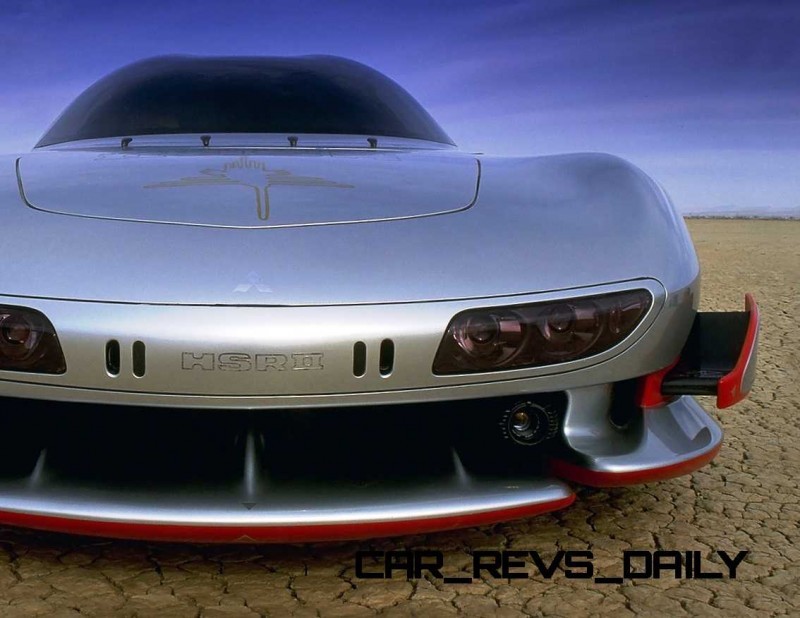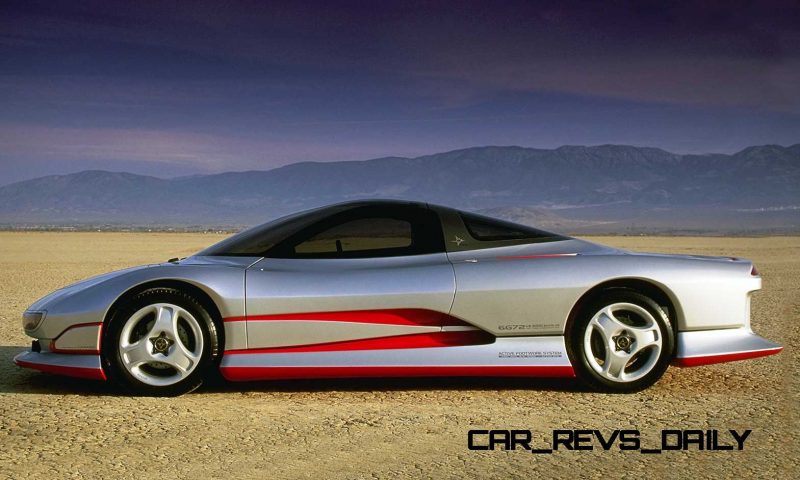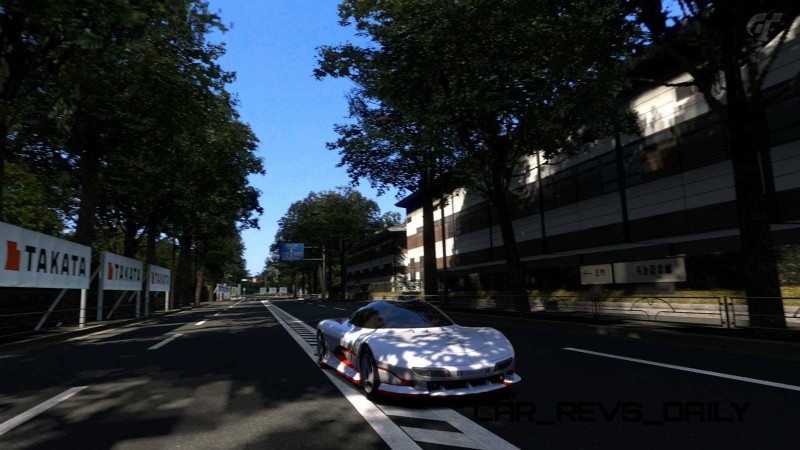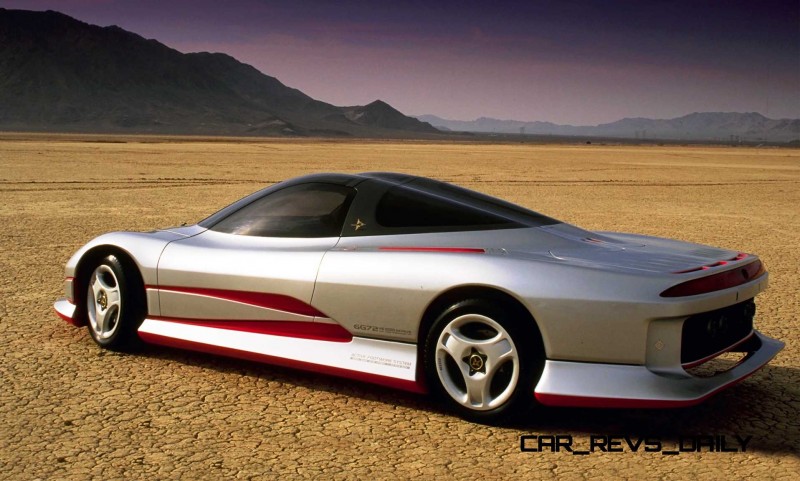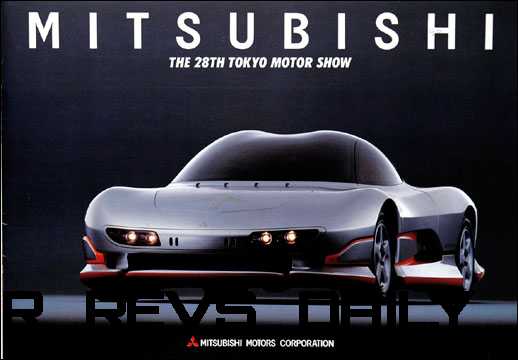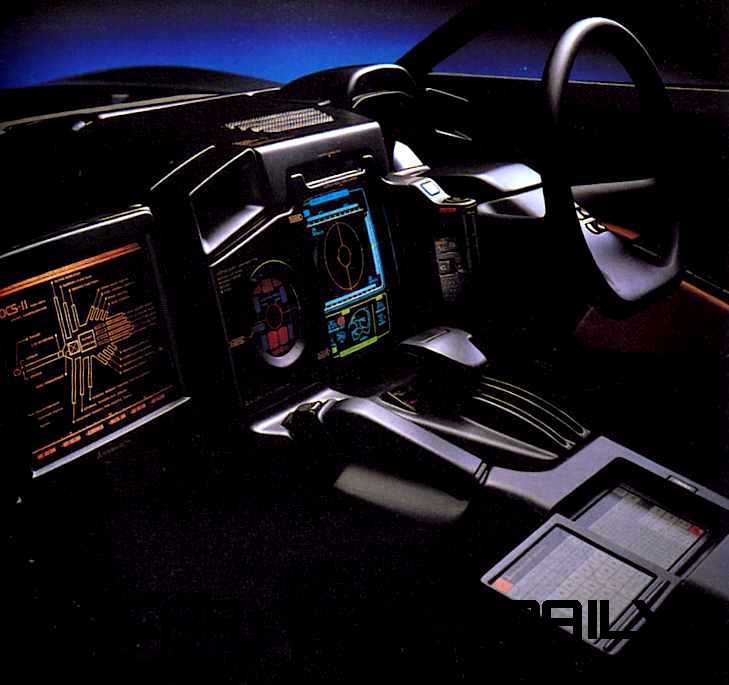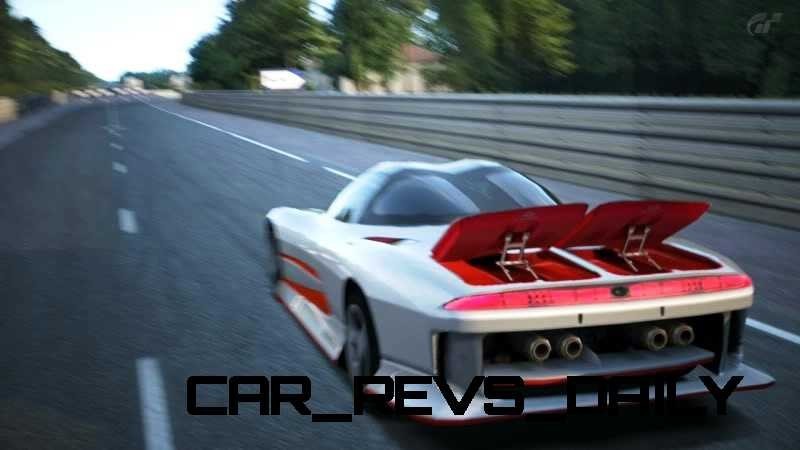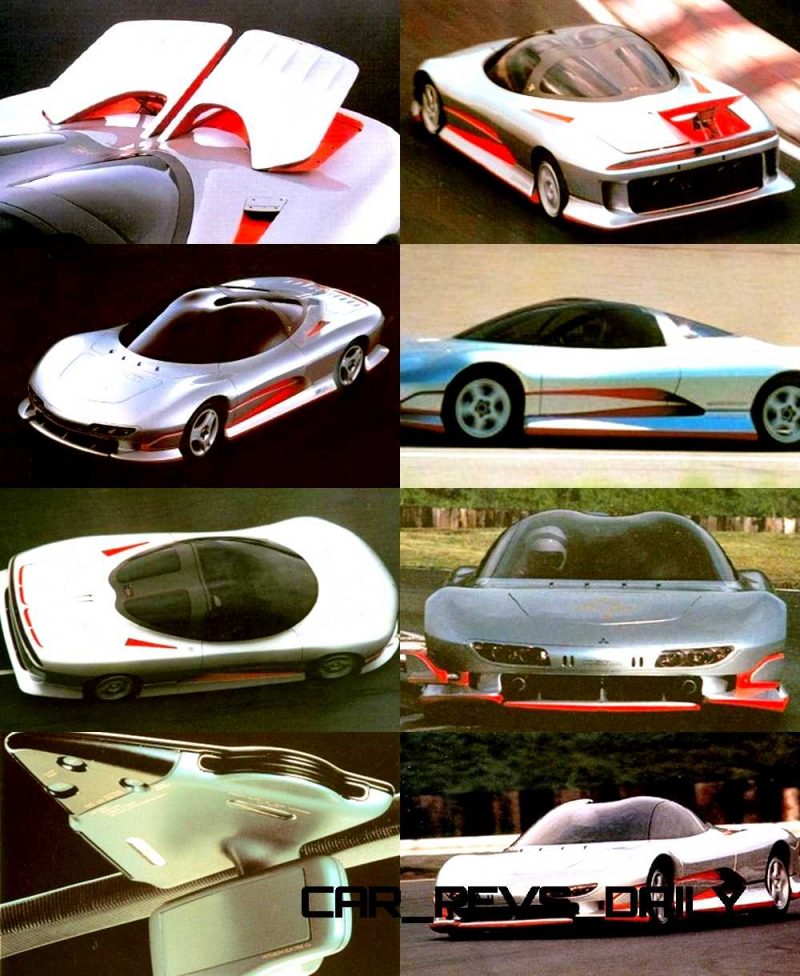 We’ve been pouring through the Mitsubishi back catalog today for a few Concept Flashback articles. The real all-star of the Mitsu lineup of show cars in the last three decades?
We’ve been pouring through the Mitsubishi back catalog today for a few Concept Flashback articles. The real all-star of the Mitsu lineup of show cars in the last three decades?
It is this – the 1989 HSR II. HSR stands for Highly Sophisticated-transport Research and was a follow-up to a 1987 concept of the same name.
The HSR II is far more beautiful, however, and also more innovative. Sure, as a 1989 Japanese exotic, the HSR II is packing a twin-turbo V6 along with 4-wheel-steering and 4-wheel-drive.
This goes well with its ABS brakes, independent suspension and electronically-adjustable dampers all around.
But the real innovations?
The AAC: Active Aero Control employs six unique surfaces to vary and optimize downforce at high speeds. Much like the Pagani Huayra, the rear spoilers, front sills and front splitter are all computer-controlled to adjust at speed, in corners and as air brakes.

Very cool, and very ahead-of-its-time.
The double bubble glass canopy is a polite nod to Zagato, and this roof even pops up on a front hinge to make entry via the side doors a piece of cake. 
The cabin itself brings numerous ideas like a backup camera in the rear-mirror area, huge screens to control and read the displays, and an overall futuristic feel all around.
1989 Mitsubishi HSR II Concept
Gran Turismo In-game Description
The Mitsubishi HSR-II (Highly Sophisticated-transport Research was an experimental concept vehicle developed in 1989. The first HSR was announced at the 27th Tokyo Auto Show in 1987, followed by the second version the next year at the 28th Tokyo Auto Show.
Contrary to it’s modern looks, the HSR-II was positioned more as an evolution of the Diamante or GTO, a fact made clear by the introduction of the “Active Footwork System” from the HSR-II. Powered by a newly developed 3L DOHC twin-turbo V6, the car performed integrated control of the full-time 4WD, 4-wheel steering, 4-wheel independent suspension, 4-wheel ABS, and active electronically-controlled suspension to allow easy driving performance.
It as truly the future of the Diamante and GTO. This dynamic drive system pioneered by the HSR-I is now fairly common on cars of today, but the HSR-II took it one step further by adding aerodynamic control. This new, unique system was dubbed the “Active Aero Control”. It featured a chin spoiler, canards and flaps, six moving pieces in all, that control the attitude of the car just like in an airplane.
Integrating all this is the OSCII, and advanced electronic made up of seven computers. In addition to attitude control, the OSCII also performed such as course tracing, automatic vehicle following and automatic parking, earning it the “computer midship” nickname.
It took on an organic design, combining functionality and beauty, and as a result of pursuing the ultimate in high tech, it seemed to give off an air that was seemingly human in nature.

Tom Burkart is the founder and managing editor of Car-Revs-Daily.com, an innovative and rapidly-expanding automotive news magazine.
He holds a Journalism JBA degree from the University of Wisconsin – Madison. Tom currently resides in Charleston, South Carolina with his two amazing dogs, Drake and Tank.
Mr. Burkart is available for all questions and concerns by email Tom(at)car-revs-daily.com.

